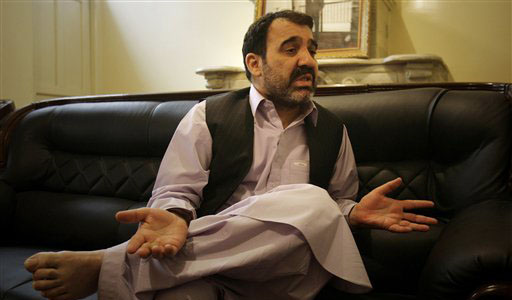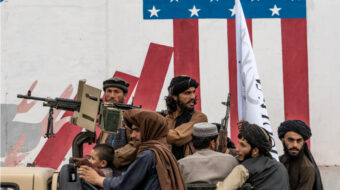
The attack on the CIA base in Afghanistan has by all accounts devastated the spy agency’s operations in the region. Seven CIA officers, two of them contractors from Xe, formerly the notorious Blackwater, were killed and some half dozen others were wounded. The Taliban claimed responsibility for the bombing.
Those killed apparently had years of “collective front line” experience. The Forward Operating Base Chapman, where the suicide bombing took place, is described as a “counterterrorism hub for joint operations with CIA, military Special Operations forces and Afghan allies.”
According to the Wall Street Journal the base’s operatives run informant networks in Afghanistan and over the border into neighboring Pakistan. “That was one of the bases where they were paying people and running people and sending them into Pakistan,” a former CIA official told the WSJ.
For the 40-year-old-plus population in the United States, images of the CIA undermining foreign governments and left-wing movements around the world run rampant. As does the image of running drugs out of Vietnam and South Asia, all done in the name of fighting communism.
And so goes the agency’s roots in Afghanistan, when it teamed up with Pakistan’s intelligence service, ISI, in the late 1970s and through the 1980s to create a proxy army of right-wing extremists in religious garb to fight the leftist Afghan government and, eventually, the Soviet Union. Actually, many argue, these early CIA actions helped to create the current security mess the United States government is purportedly trying to solve.
But this is 2010 and a post 9/11 world, where Americans learned first-hand about terrorist violence on American soil. So collection of intelligence from a region where there are active networks of gangs who will attack Americans is necessary, many would argue, including President Obama.
In laying out his reason to send 30,000 more troops to Afghanistan, the president laid out three goals. The first is to militarily defeat al-Qaeda and “neutralize” the Taliban. The second is to train the Afghan Army so it can “take over.” The third goal is to partner with Pakistan against a “common enemy.”
Whether this is a strategy to protect Americans from attacks or not is now vigorously being debated among the antiwar, democratic forces in the U.S. and around the world, with a decided emphasis, including from this news website, that such an escalation will only make matters worse.
As Foreign Policy in Focus columnist Conn Hallinan writes, the goals are “flawed.”
“The military aspect of the surge simply makes no sense. According to U.S. National Security Advisor James Jones, al-Qaeda has fewer than 100 operatives in Afghanistan, so ‘defeating’ it means trying to find a few needles in a 250,000 square-mile haystack.”
Looking at the goal of U.S. partnership with Pakistan, Hallinan argues, is “predicated on the assumption that both countries have a common ‘terrorist’ enemy, but that is based on either willful ignorance or stunningly bad intelligence.”
It seems that Pakistan’s interests are conflicting and its relations with the United States are complex. But, at least according to one CIA expert, the overriding interests that guide Pakistan historically and currently, is its almost pathological fear and obsession with India.
Since the bloody partition of India and establishment of Pakistan in 1948, after Hindus and Muslims jointly threw off the yoke of British colonialism, relations have never been normal. And India dealt a devastating blow politically and militarily to Pakistan in a 1971 war, which resulted in East Pakistan becoming an independent Bangladesh. This history colors greatly Pakistan’s policies.
Part of Pakistan’s interest in working with the CIA in the 1980s was to establish a Pak-friendly government in Afghanistan. And so was born the Taliban. Within the ISI a huge department devoted just to the Taliban existed.
It seems that Pakistan has two ponies in the race. It keeps its most elite troops on its border with India, not the Afghan border, according to the spy agency expert.
In Iraq and Afghanistan, U.S. military forces are out in plain sight. But not in Pakistan. It’s a much more shadowy conflict, which includes the CIA running networks, and sending drones into Pakistan killing “targets” and civilians alike.
Not that the CIA is running a rogue operation, the expert on the spy agency said. It’s working with the Department of Defense, State Department, FBI, etc., collecting electronic and human intelligence that gives coordinates for drone attacks. The drone attacks have enraged many in Pakistan.
Interestingly, though, one thing that began to change Pakistan’s attitude towards “fighting terrorism” on its borders were the Al-Qaeda and Taliban terrorist attacks inside the country.
In the 1980s there was a movement on college campuses to abolish the CIA. They had written the book on terrorism and were implicated in the illegal mining of Nicaragua’s harbor. I even spoke at one such rally. So I can’t help but wonder about what lurks in the shadows between spy agencies, geopolitical forces, economic and military might.
Photo: Ahmed Wali Karzai speaks during an interview with The Associated Press in Kandahar, Afghanistan. The New York Times reported that the Afghan President Hamid Karzai’s younger brother is on the CIA payroll. He is also suspected of being a drug king pin in the booming illegal opium trade. Karzai denied the charges. AP Photo/Allauddin Khan












Comments